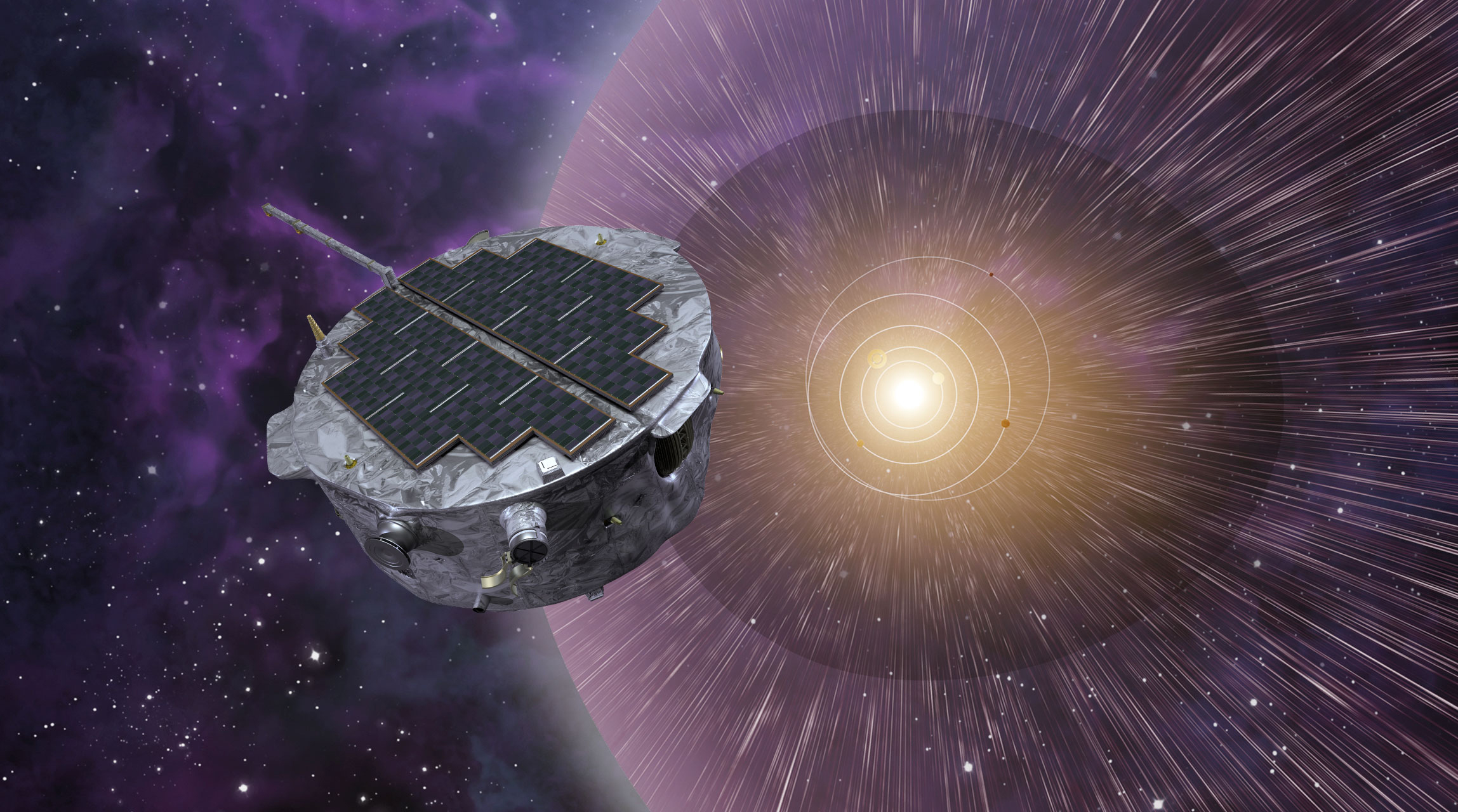News
IMAP Mission Advances to Next Development Stage
NASA has given Princeton University, the Johns Hopkins Applied Physics Laboratory (APL) and their many partner institutions the go-ahead to begin implementing the Interstellar Mapping and Acceleration Probe (IMAP) — a mission to sample, analyze and map particles streaming to Earth from the edges of interstellar space.
Set to launch in February 2025, IMAP will investigate two critical issues in space physics: the acceleration of energetic particles from the Sun and the interaction of these particles — known as the solar wind — with the interstellar medium. The solar-powered spacecraft will be positioned about one million miles (1.5 million kilometers) away from Earth and toward the Sun at what is called the first Lagrange point, where it can monitor the interactions between the solar wind and the interstellar medium in the outer solar system.
In May, the IMAP team underwent a preliminary design review, covering topics such as spacecraft design, mission requirements, science plans, schedule and costs. Held at APL, which manages the mission and will build and operate the IMAP spacecraft, the review included a panel of external experts tasked with evaluating the information and assessing mission progress for NASA. Following a subsequent meeting, the team received confirmation from NASA on July 12 to proceed to the next stage of development, which includes the detailed, final spacecraft and mission design.
“This review was a significant step forward,” said Princeton University astrophysics professor David McComas, who, as IMAP principal investigator, leads the mission and its international team of 24 partner institutions. “The team has worked very hard to show that we are on track to meet the cost, schedule and technical requirements of a challenging mission, and the reviewers recognized that.”
Carrying 10 science instruments provided by international and domestic research organizations and universities, IMAP will help researchers better understand the boundary of the heliosphere, the magnetic “bubble” surrounding and protecting our solar system. It’s here where the constant flow of the solar wind collides with material from the rest of the galaxy. This collision limits the amount of harmful cosmic radiation entering the heliosphere, and by collecting and analyzing the particles that make it through, IMAP will reveal just how the heliosphere filters cosmic rays.
The mission also aims to learn more about the generation of cosmic rays in the heliosphere; these particles pose risks to astronauts and technological systems, but they may also play a role in the formation and presence of life in the universe.
“With science and engineering expertise from around the world, the IMAP team has a deep experience in missions designed to examine, in depth, the Sun’s effects on our solar system and the space beyond,” said Joe Westlake, the IMAP project scientist from APL. “We’re excited to fine-tune the designs on a spacecraft and mission that will deliver unprecedented science.”
IMAP is the fifth mission in NASA’s Solar Terrestrial Probes (STP) Program portfolio. The Heliophysics Program Office at NASA’s Goddard Space Flight Center in Greenbelt, Maryland, manages the STP Program for the agency’s Heliophysics Division of NASA’s Science Mission Directorate.
For more information, visit https://blogs.nasa.gov/imap/.
